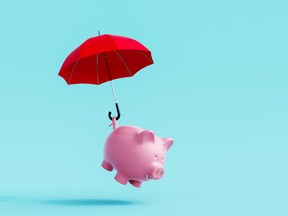Mary Castillo: How to plan for emergency expenses

Mary Castillo: How to plan for emergency expenses

Article content
Does saving money for emergencies seem unrealistic when there are bills to pay, food to provide, and children’s activities such as soccer or dance to fund?
THIS CONTENT IS RESERVED FOR SUBSCRIBERS ONLY
Subscribe now to read the latest news in your city and across Canada.
- Exclusive articles from Barbara Shecter, Joe O'Connor, Gabriel Friedman, and others.
- Daily content from Financial Times, the world's leading global business publication.
- Unlimited online access to read articles from Financial Post, National Post and 15 news sites across Canada with one account.
- National Post ePaper, an electronic replica of the print edition to view on any device, share and comment on.
- Daily puzzles, including the New York Times Crossword.
SUBSCRIBE TO UNLOCK MORE ARTICLES
Subscribe now to read the latest news in your city and across Canada.
- Exclusive articles from Barbara Shecter, Joe O'Connor, Gabriel Friedman and others.
- Daily content from Financial Times, the world's leading global business publication.
- Unlimited online access to read articles from Financial Post, National Post and 15 news sites across Canada with one account.
- National Post ePaper, an electronic replica of the print edition to view on any device, share and comment on.
- Daily puzzles, including the New York Times Crossword.
REGISTER / SIGN IN TO UNLOCK MORE ARTICLES
Create an account or sign in to continue with your reading experience.
- Access articles from across Canada with one account.
- Share your thoughts and join the conversation in the comments.
- Enjoy additional articles per month.
- Get email updates from your favourite authors.
THIS ARTICLE IS FREE TO READ REGISTER TO UNLOCK.
Create an account or sign in to continue with your reading experience.
- Access articles from across Canada with one account
- Share your thoughts and join the conversation in the comments
- Enjoy additional articles per month
- Get email updates from your favourite authors
Sign In or Create an Account
or
Article content
Personal finance experts frequently advise having enough money to cover three to six months of expenses in case you find yourself unable to work. However, given the high cost of living, this advice might seem impractical.
Article content
Article content
Article content
Here are some of the key facts to consider with different approaches to creating your own emergency plan.
Article content
By signing up you consent to receive the above newsletter from Postmedia Network Inc.
Article content
Create a separate emergency savings account
Article content
Establishing a dedicated bank account for emergency savings is an approach that allows you to start small and gradually increase your contributions as your budget permits. The process is straightforward: Open a high-interest savings account at your financial institution, then using online banking decide how much you want to transfer automatically into this account each month.
Article content
To help keep your money safe from yourself, consider designating this savings account not as chequing or saving but what is usually called by your financial institution the “other” position on your debit card. This way, it remains accessible online but not at a debit terminal during an impulse purchase. If you and your spouse manage money together, or if there’s a trusted individual willing to be a joint account holder, you could set up the account to require two signatures for withdrawals.
Article content
A savings account provides easy access to funds when you’re faced with an emergency. Once those funds are exhausted, if you still need financial support, you may need to rely on other savings, borrowing options, or government or employer assistance programs, if you are eligible.
Article content
Article content
Use investments to pay for emergencies
Article content
Article content
If you invest regularly, you might forego a separate savings account in favour of diverse investments, such as a registered retirement savings plan (RRSP), tax-free savings account (TFSA), or non-registered investment accounts. In an emergency, you can evaluate your investment portfolio to determine which funds to withdraw. However, it is important to assess the situation before withdrawal. Review market conditions, penalties and fees, delays in accessing funds, or tax consequences in the case of RRSP withdrawals.
Article content
If you have access to a line of credit, you might use it to cover emergency expenses and then, depending on interest rates and returns, decide whether to repay the borrowed money from your investments or increase payments to your credit line once your income returns to normal.
Article content
If you prefer to keep most of your savings invested, consider maintaining a small sum of money in a high-interest savings account, equivalent to two months’ worth of expenses. Alongside this, keeping four to six months’ worth of money in a low-risk investment such as a money market fund or cashable guaranteed investment certificates (GICs) can provide a financial safety net. This approach ensures that funds are accessible without incurring big losses when the markets are down.







